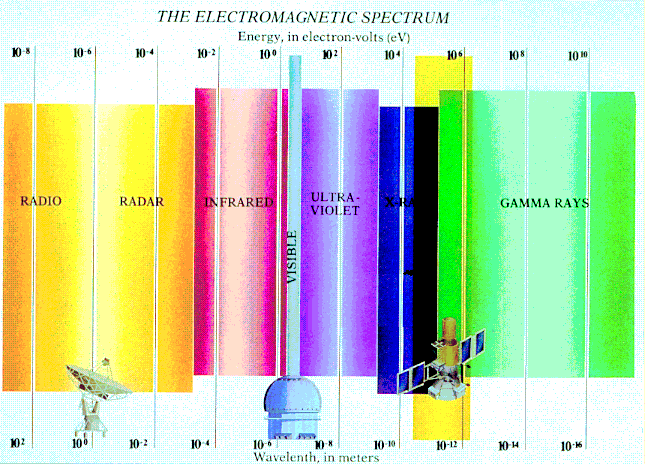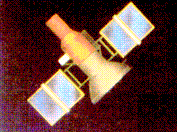Cosmic gamma radiation

-
The cosmic gamma rays constitute the highest-energy domain of electromagnetic spectrum. Gamma-ray photons emitted by celestial bodies are ten of thousand times more energetic than photons of visible light.
-
Visible light radiation has wavelength range from about 4000 angstroms to 7000 angstroms. This corresponds to an energy of two or three electron volts comparing to gamma-ray photons energy domain which starts at about 100 keV.
-
The earth’s atmosphere absorbs cosmic gamma radiation. So they can be studied only in space.
Gamma-ray photons detection
-
Because the wavelenths of gamma photons are smaller than the distances between the atom matter, it is not possible to reflect and concentrate a beam of gamma photons in lenses and mirrors as it can be done with visible light in traditional optical telescopes.
-
Gamma-ray photons can be detected by collecting electrons they create when striking with detectors which are high density materials as sodium iodide. Three major types of interaction play an important role in radiation measurements and all these processes lead to the partial or complete transfer of the gamma-ray photon energy to electron.
-
The atomic number of the interaction medium and the energy of the gamma photon have a strong influence on the relative probabilities of these three interactions :
-
Photoelectric absorption predominates for low-energy gamma rays (up to several tens keV) for the heaviest elements.
-
Pair production predominates for high-energy gamma rays (above 5-10 MeV).
-
Compton scattering is the most probable process over the range of energies between these extremes.
-
SIGMA gamma-ray detectors
-
The observational domain of the SIGMA telescope extends from high-energy X-rays to low-energy gamma rays, in the energy range 35 keV to 1.3 MeV
-
When a gamma photon enters the sodium iodide gamma-ray detector, it excites the molecules and induces them to emit a flash of visible light.
-
Sensitive light-detecting photomultiplier tubes detect that light and convert it in an electric pulse. The height of the electric pulse is proportional to the gamma photon energy in the sodium iodide crystal.






